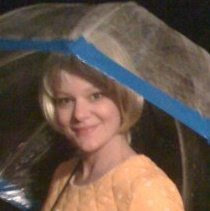The Shepard Fairey retrospective on display at the Boston ICA, open to the public on February 6th, marks the 20th anniversary of the artist's now unmistakable "Andre the Giant Has a Posse" image, but also the first definitive collection of Fairey's work, or any street artist for that matter, in a museum setting.
The artist, who's work traditionally confronted society to stop and pause for a moment as they went through their daily urban lives, has used the guerrilla techniques he has been perfecting over the last two decades in his most recent, and arguably most notable campaign, the Obama HOPE poster.

(A new mural created specifically for the exhibit tells a story of war and inequality, with reference to fighting in the Gaza Strip)
The show is divided into seven sections, not chronologically, but by themes; Propaganda; War and Peace; Stylized; Music; Portraiture; Hierarchies of Power; and finally Question Everything.
As I moved through the collection, first I was enamored with the texture, scale and complexity of Fairey's work, layers of paper and hidden icons. It became apparent early on that Fairey was a master at branding himself, choosing to recycle key images in each of his pieces, as a signature, or maybe even a way to let the viewer on the street know it was a continuation of an earlier conversation?

(Fairey uses the color red for it's stimulating and provocative nature as advertisers have forever, but admits it was a budgetary constraint that he embraced as an asset rather than a liability, when in his beginnings he found a xerox machine that gave out free copies in only red black and white)
As I continued through the rooms I became more and more impressed by this
man's conviction, and dedication to his ideals. Be mindful of excess. Question your leaders and abuse of power. Some people are inherently giving, some are inherently taking. I was equally aroused by his ability to embrace pop culture, propaganda, and historical imagery to make his work relatable to the general public while being the carrier pigeons for his message, for example utilizing Vietnam War photography as a way to speak out against the war in Iraq.

"To have a point of view is equally as important as having skill, and a nice piece of art. A lot of people can paint better than I can but I think my art combined with it's commentary tells a stronger narrative than a pretty landscape."
When asked if he missed being able to fly below the radar with his current success and exposure Fairey explained, "Anonaminity gives you a lot of freedom, but I realized maybe ten years ago, that if you are trying to have a dialogue, that embracing and being upfront about what I do is more affective than hiding. It's like if you don't stick up for it you are almost admitting you are doing something wrong, so I decided that I was going to stand behind my work, and take the credit or the blame, whatever comes with it. That way it is more about communication than rebellion."

And of the HOPE campaign? Fairey was first impressed with then Senator Barack
Obama after watching his speech at the Democratic National Convention. In him he saw someone who understood how to unite people and to look past petty differences. "There was a linear evolution in my political position based on the issues I already had been exploring, and this one person embodied all those things." To be sure he was helping the cause, rather than hindering his image, Fairey asked permission from the campaign to make a poster. Two days after getting the green light 10,000 prints had been made, and a free download of the HOPE image available on his website. By the date of Oprah and Obama's rally in Des Moines, 300,000 posters and over a million stickers had made their way to the Iowa streets. "I heard from President Obama's people less than a month after I made the image. That's how dialed in this guy is, I knew then that he truly was paying attention." Later when meeting at a fundraiser Fairey was asked by the truly curious Obama how he was able to get the poster around so fast. "Aw shucks" laughs Fairey as he retells the story reiterating how much that says about the grass roots movement and the nations passion for Barack Obama.
The exhibit is on display from February 6-August 16, 2009. Levis has joined the museum to sponsor the show, and the events that surround it. In addition to over 250 pieces of art in the museum space, the ICA has commissioned numerous murals throughout Boston and Cambridge, acknowledging that Shepard Fairey's work has special meaning when living in the urban landscape.
















